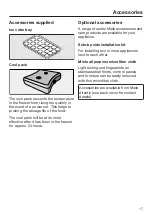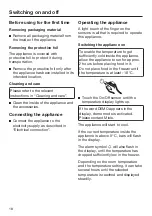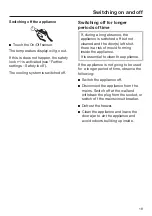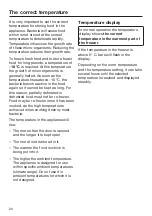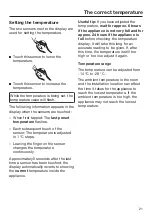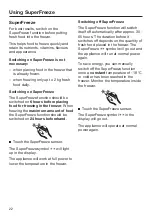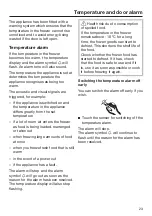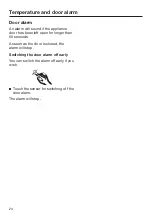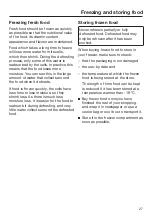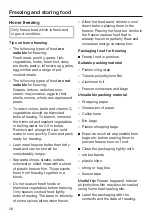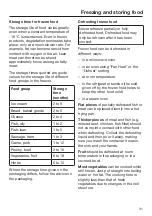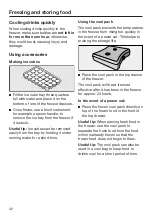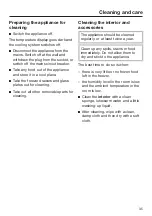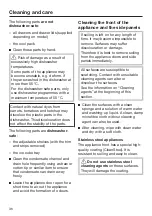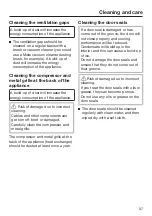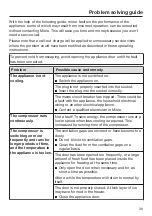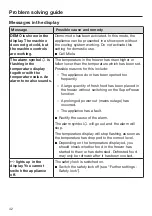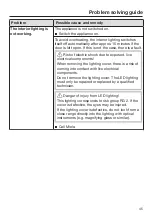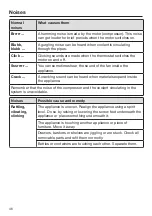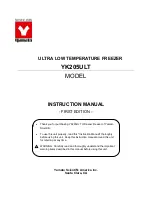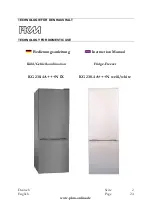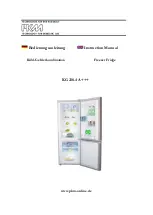
Freezing and storing food
31
Storage time for frozen food
The storage life of food varies greatly,
even when a constant temperature of
-18 °C is maintained. Even in frozen
products, degradation processes take
place, only at a much slower rate. For
example, fat can become rancid from
contact with oxygen in the air. Lean
meat can therefore be stored
approximately twice as long as fatty
meat.
The storage times quoted are guide
values for the storage life of different
food groups in the freezer.
Food group
Storage
time
(months)
Ice cream
2 to 6
Bread, baked goods
2 to 6
Cheese
2 to 4
Fish, oily
1 to 2
Fish, lean
1 to 5
Sausage, ham
1 to 3
Game, pork
1 to 12
Poultry, beef
2 to 10
Vegetables, fruit
6 to 18
Herbs
6 to 10
Where the storage time given on the
packaging differs, follow the advice on
the packaging.
Defrosting frozen food
Never refreeze partially or fully
defrosted food. Defrosted food may
only be refrozen after it has been
cooked.
Frozen food can be defrosted in
different ways:
– in a microwave oven
– in an oven using “Fan Heat” or the
“Defrost” setting
– at room temperature
– in the refrigerator section (the cold
given off by the frozen food helps to
keep the other food cold)
– in a steam oven
Flat pieces
of partially defrosted fish or
meat can be placed directly into a hot
frying pan.
Thicker pieces
of meat and fish (e.g.
minced beef, chicken, fish fillet) should
not come into contact with other food
when defrosting. Collect the defrosting
liquid and then pour it away, making
sure you wash the container it was in,
the sink and your hands.
Fruit
should be defrosted at room
temperature in its packaging or in a
covered bowl.
Most vegetables
can be cooked while
still frozen. Just put straight into boiling
water or hot fat. The cooking time is
slightly less than that of fresh
vegetables due to changes in the cell
structure.
Summary of Contents for FN 28262 edt/cs
Page 60: ......
Page 61: ......
Page 62: ......
Page 64: ...M Nr 11 210 610 00 en AU NZ FN 28262 ws FN 28262 edt cs ...

